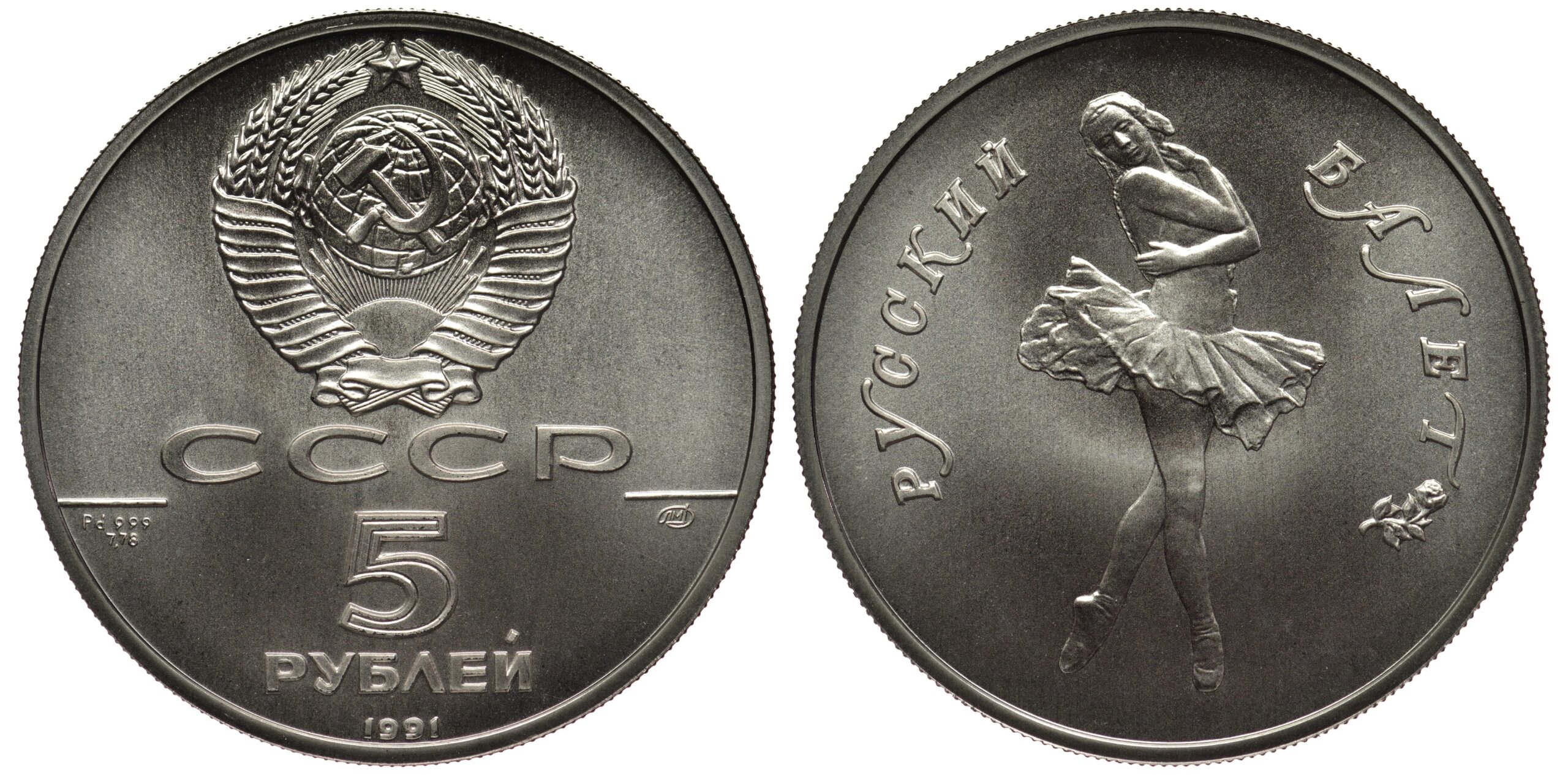Exploring the World of Palladium Coins: Rarity, Value, & Collectibility
When we think of precious metal coins, gold and silver typically come to mind. However, there’s another valuable metal that has found its way into coinage: palladium. This silvery-white metal, part of the platinum group, has unique properties that make it valuable for industrial applications and, in some cases, for minting coins. But are there actually coins made of palladium? The answer is yes, although they’re far less common than their gold or silver counterparts.
In this blog, we’ll explore the world of palladium coins, their history, notable examples, and why they’re sought after by collectors and investors alike. Here’s what you need to know if you’re interested in collecting palladium coins, brought to you by the experts from First National Bullion and Coin. San Diego collectors trust us for our extensive industry knowledge and high-quality service.
Palladium Defined
Before diving into palladium coins, it’s essential to understand what palladium is and why it’s valuable. Palladium is a rare precious metal discovered in 1803 by William Hyde Wollaston. It’s part of the platinum group metals (PGMs), which also includes platinum, rhodium, ruthenium, iridium, and osmium. Palladium has several unique properties that make it valuable:
- Rarity – Palladium is 30 times rarer than gold in the Earth’s crust.
- Durability – It’s resistant to corrosion and tarnishing.
- Catalytic properties – Palladium is crucial in catalytic converters for vehicles.
- Malleability – It can be easily worked and shaped without breaking.
These properties make palladium valuable not only for industrial applications but also for jewelry and, in some cases, coinage.
The History of Palladium in Coinage
The use of palladium in coins is a relatively recent development compared to gold and silver. The first palladium coins were introduced in the latter half of the 20th century. Here’s a brief timeline of palladium’s entry into the world of numismatics:
- 1966 – Sierra Leone issues the first palladium coin, a proof commemorative piece.
- 1967 – Tonga follows suit with its own palladium coin.
- 1970s–1980s – Several countries experiment with palladium coins, including Bermuda, Palau, and the Soviet Union.
- 2009 – China introduces the Panda series in palladium.
- 2018 – The United States Mint is authorized to produce palladium coins.
Notable Palladium Coins
Several countries have minted palladium coins, each offering something distinct to collectors and investors. Here’s a look at some notable examples.
American Palladium Eagle
The American Palladium Eagle is a prominent palladium coin issued by the United States Mint. First introduced in 2017, this coin is part of the American Eagle series and is notable for its 1-ounce palladium content. It features a design inspired by the classic Liberty Head design of the early 1900s, with a depiction of Lady Liberty on the obverse and a majestic eagle on the reverse. The American Palladium Eagle is minted in proof and uncirculated versions, making it a popular choice among collectors.
Canadian Palladium Maple Leaf
Canada has also entered the palladium coin market with its Palladium Maple Leaf series. First issued in 2005, this coin mirrors the design of the popular Gold Maple Leaf series, featuring the iconic maple leaf on the reverse and an effigy of Queen Elizabeth II on the obverse. The Canadian Palladium Maple Leaf coins are available in various denominations and are known for their high purity and beautiful design.
Russian Palladium Rouble
Russia has issued palladium coins such as the Russian Palladium Rouble. These coins are part of a series commemorating significant historical events or figures. The Palladium Rouble is valued not only for its palladium content but also for its historical and cultural significance.
Australian Palladium Koala
Australia’s Perth Mint has produced palladium coins, including the Australian Palladium Koala. These coins feature the iconic koala bear, a symbol of Australia’s unique wildlife. The Palladium Koala is part of a broader series that includes gold and silver versions, appealing to collectors who appreciate both the design and the metal.
The Value of Palladium Coins
The value of palladium coins is influenced by several factors.
Metal Content
The intrinsic value of palladium coins largely depends on their metal content. Palladium prices can fluctuate significantly based on market conditions, demand, and industrial usage. Coins with higher palladium content or weight generally have higher value.
Condition & Grading
The condition of a coin, often assessed through grading systems such as those used by the Numismatic Guaranty Corporation (NGC) or Professional Coin Grading Service (PCGS), can impact its value. Coins in pristine condition, especially those graded as Proof or Mint State, typically have higher value.
Historical & Collectible Significance
Coins that commemorate significant events, historical figures, or unique designs can be more valuable to collectors. The historical context and artistic value can enhance a coin’s appeal and investment potential.
Investment Potential
Palladium coins can be an attractive option for investors looking to diversify their portfolios. Here’s why.
Diversification
Including palladium coins in an investment portfolio can provide diversification. Palladium often behaves differently from gold and silver, potentially offering different market dynamics and risk profiles.
Industrial Demand
Palladium’s use in industrial applications, particularly in automotive catalytic converters, can influence its value. As demand for palladium in these sectors rises, the value of palladium coins may also increase.
Historical Performance
Palladium has demonstrated strong performance in recent years, with significant price increases. Historical performance, combined with current trends, can make palladium coins a viable investment option.
Collecting Palladium Coins
For numismatists and precious metal investors, palladium coins offer an interesting opportunity. Here are some factors to consider if you’re interested in collecting palladium coins.
Rarity & Value
Due to their limited mintage, palladium coins can be quite valuable. Their worth is typically based on both their metal content and their numismatic value. As with any collectible, rarer coins or those in better condition generally command higher prices.
Authenticity
Given their value, it’s crucial to ensure the authenticity of palladium coins. Purchasing from reputable dealers and having coins authenticated by professional grading services can protect your investment.
Storage & Handling
While palladium is resistant to tarnishing, proper storage is still important. Store palladium coins in a cool, dry place, preferably in protective holders designed for coins. When handling, use gloves to avoid transferring oils from your skin to the coin’s surface.
Market Awareness
Keep an eye on both the numismatic market and the price of palladium. The value of your coins can fluctuate based on both collector demand and the spot price of palladium.
How to Buy Palladium Coins
Purchasing palladium coins involves several considerations.
Reputable Dealers
Buy from reputable dealers or authorized coin distributors to ensure the authenticity and quality of the coins. Look for dealers with good reviews and a history of reliable transactions.
Certification
Consider coins certified by recognized grading services. Certification provides assurance of authenticity and quality, which can be important for both collectors and investors.
Market Research
Conduct thorough market research to understand current prices, trends, and the availability of palladium coins. Staying informed can help you make better investment decisions.
The Future of Palladium Coinage
As we look to the future, it’s interesting to speculate on the role palladium might play in coinage. While it’s unlikely to replace more traditional metals like gold and silver, there are factors that could influence its use:
- Increased awareness – As more collectors become aware of palladium coins, demand could increase, potentially leading to more mints producing them.
- Technological advancements – New technologies in mining and refining could make palladium production more cost-effective.
- Investment demand – If palladium continues to be seen as a valuable investment metal, more countries might consider minting palladium coins.
- Commemorative issues – Palladium’s rarity makes it an attractive option for special commemorative coins.
However, challenges remain. The industrial demand for palladium, particularly in the automotive industry, could continue to limit its availability for coinage. Additionally, the volatility of palladium prices might make some mints hesitant to commit to large-scale production.
While coins made of palladium aren’t as common as those made of gold or silver, they do exist and offer a fascinating niche in the world of numismatics. From the pioneering efforts of Sierra Leone in the 1960s to the modern American Palladium Eagle, these coins represent a unique intersection of precious metal investing and coin collecting.
For those interested in diversifying their coin collections or precious metal portfolios, palladium coins offer an intriguing option. Their rarity, combined with the industrial importance of palladium, makes them a potentially valuable addition to any collection.
As with any investment or collecting activity, it’s important to do your research, understand the market, and purchase from reputable sources. Whether you’re a seasoned numismatist or a curious investor, the world of palladium coins offers a shiny, silvery-white frontier to explore.
If you’re not sure where to start, seek some advice from a precious metals dealer. If you live in San Diego, silver bars, gold bullion, and palladium coins of the highest quality are available at First National Bullion and Coin. We buy and sell all kinds of precious metals, including silver, platinum, gold, and palladium. San Diego collectors who are looking for trustworthy dealers and high-quality service should give us a call to speak with one of our precious metals experts.
The statements made in this blog are opinions, and past performance is not indicative of future returns. Precious metals, like all investments, carry risk. Precious metals and coins may appreciate, depreciate, or stay the same in cash value depending on a variety of factors. First National Bullion does not guarantee, and its website and employees make no representation, that any metals for sale will appreciate sufficiently to earn the customers a profit. The decision to buy, sell, or borrow precious metals and which precious metals to purchase, borrow, or sell are made at the customer’s sole discretion.


